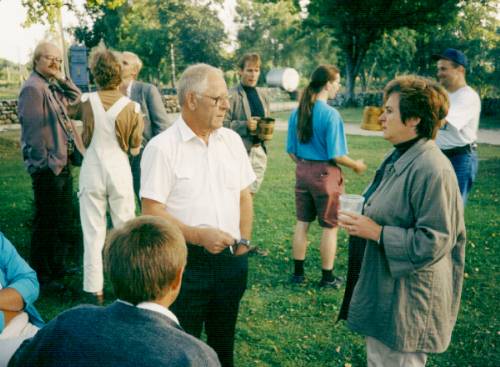Arvo Paju
Mr. Paju owns the inn we stayed in. He also brews Koduolu, the process being the following:
- barley malted by Mr. Paju himself, drying after germination in 60 deg C
- infusion mashing with 98 deg C water, poured slowly onto the bed of crushed malt, mashing takes about 3 hours, 36 kg of malt to give 70 liters of wort (total 100 liters of water used)
- hops boiled separately for 3 hours, 250 grams of self grown hops (however in summertime the dosage is 350 g)
- lautering through juniper twigs and straws
- brewing takes place once per month
- fermenting with ordinary baker's yeast
The brew was light in colour, easy to consume and had a noticeable apple flavor.

Aarne Trei
Mr. Trei brews Koduolu this way:
- water is boiled before use
- the malt is added to 75 - 77 deg C water
- mashing takes 3 hours
- juniper twigs used in lauter tun, lautering in three hours
- hops added to clear wort running from lauter tun
- 50 kg of malt
- 100 g of hops
- 150 g baker's yeast
- 150 liters of wort
- OG about 1.064

Viivo Naalik
Mr. Naalik (the surname escapes me...) described his brew briefly this way:
- he buys malt in the continental Estonia, no possibility for malting himself
- temperature control is not very important
- mashing is continued until the mash no more forms a film in wire loop immersed in the mash
- 100 kg malt
- 200 - 250 liters of wort
- 500 g hops






